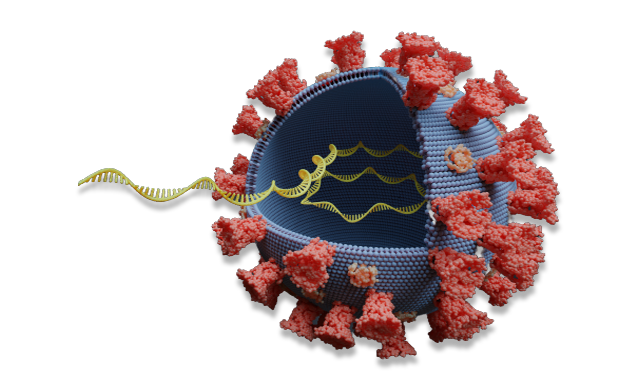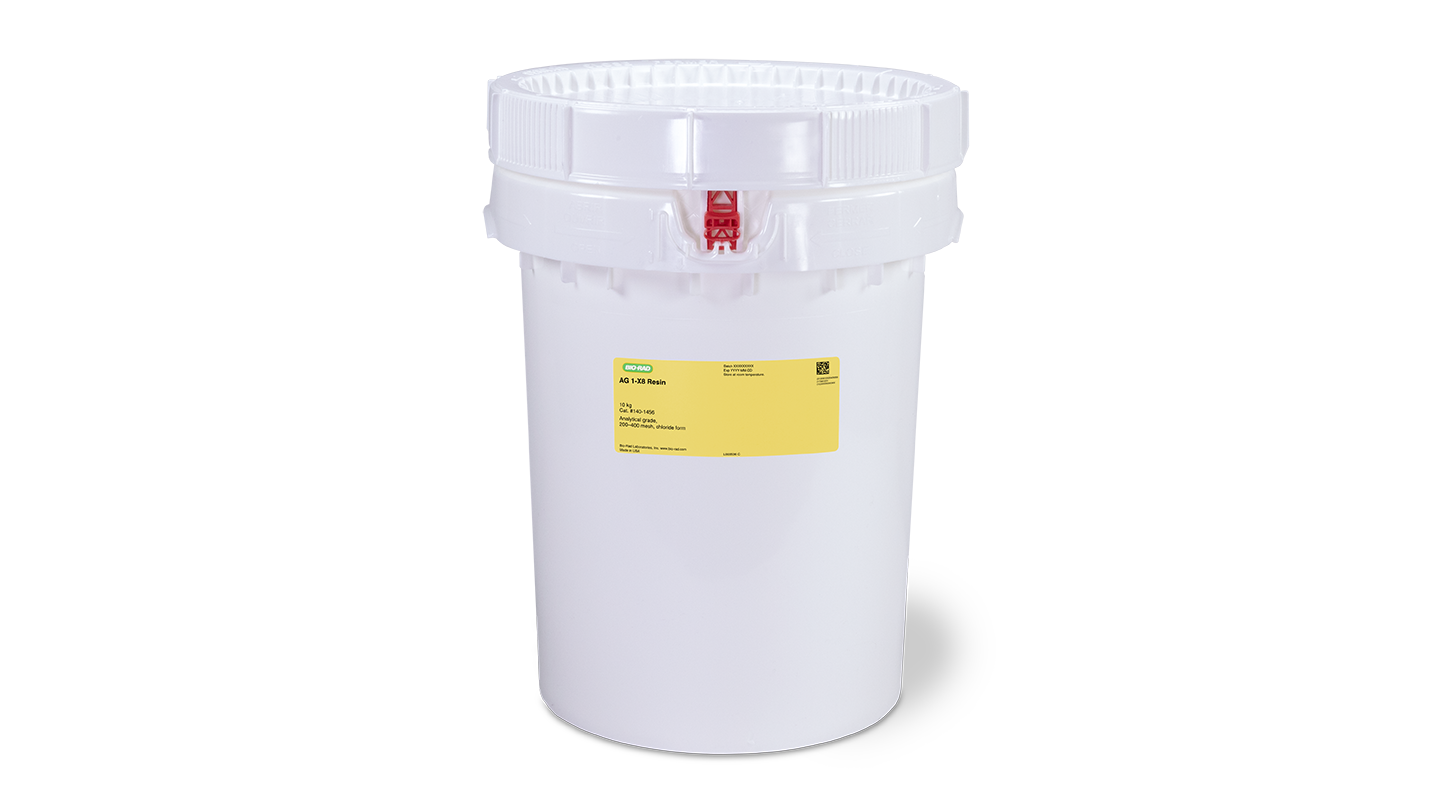
Overview
Chelex 100 and COVID-19

Streamline your viral RNA extraction with Chelex 100 Resin
or InstaGene Matrix.
Chelex 100 Resin is a styrene divinylbenzene copolymer containing paired iminodiacetate ions, which act as chelating groups in binding polyvalent metal ions. The carboxylic acid groups of Chelex 100 Resin classify it as a weak cation exchange resin, but it differs from other exchangers in this class by featuring uniquely high selectivities for metal ions and much higher bond strengths. The resin can be used to ultrapurify buffers and ionic reagents: it will scavenge metal contaminants without altering the concentration of nonmetal ions.
Chelex 100 chelating ion exchange resin has a stronger selectivity for copper, iron, and other heavy metal ions over monovalent cations such as sodium and potassium. Its selectivity for divalent over monovalent ions is approximately 5,000 to 1, and it has a strong attraction for transition metals, even in highly concentrated salt solutions.
Chelex 100 Resin can also capture divalent cations such as Mg2+ or Ca2+ from biological samples and inhibit the activity of metallo-nucleases. This allows Chelex 100 Resin to be used for DNA and RNA sample preparation, offering a cost-effective alternative to conventional extraction kits.
The following forms of Chelex 100 Resin are available:
- Analytical grade Chelex 100 Resin — exhaustively sized, purified, and converted to make it suitable for accurate, reproducible analytical techniques
- Biotechnology grade Chelex 100 Resin — the analytical grade form certified to contain fewer than 100 microorganisms per gram of resin
- Molecular biology grade Chelex 100 Resin — certified to be endo- and exonuclease-free and contain no ligase inhibitors
Larger volumes and special packaging for industrial applications are available upon request.
More Information
Related Technologies
Related Products
Specifications
Ordering
items
Use the filters below to refine results!

500 g, cation exchange resin, sodium form, 1% crosslinkage, 50–100 dry mesh size, 300–1,180 µm wet bead size, ~3,500 MW limit

10 kg cation exchange resin, sodium form, 1% crosslinkage, 50–100 dry mesh size, 300–1,180 µm wet bead size, ~3,500 MW limit

500 g, cation exchange resin, sodium form, 1% crosslinkage, 100–200 dry mesh size, 150–300 µm wet bead size, ~3,500 MW limit

10 kg cation exchange resin, sodium form, 1% crosslinkage, 100–200 dry mesh size, 150–300 µm wet bead size, ~3,500 MW limit

500 g, cation exchange resin, sodium form, 1% crosslinkage, 200–400 dry mesh size, 75–150 µm wet bead size, ~3,500 MW limit

10 kg, cation exchange resin, sodium form, 1% crosslinkage, 200–400 dry mesh size, 75–150 µm wet bead size, ~3,500 MW limit

100 g, cation exchange resin, iron form, 1% crosslinkage, 100–200 dry mesh size, 150–300 µm wet bead size, ~3,500 MW limit

1 kg cation exchange resin, iron form, 1% crosslinkage, 100–200 dry mesh size, 150–300 µm wet bead size, ~3,500 MW limit

10 Kg cation exchange resin, iron form, 1% crosslinkage, 100–200 dry mesh size, 150–300 µm wet bead size, ~3,500 MW limit

50 g, molecular biology grade cation exchange resin, sodium form, 1% cross-linkage, 200–400 dry mesh size, 75–150 µm wet bead size, ~3,500 MW limit, can be used for chromatography or molecular biology applications








